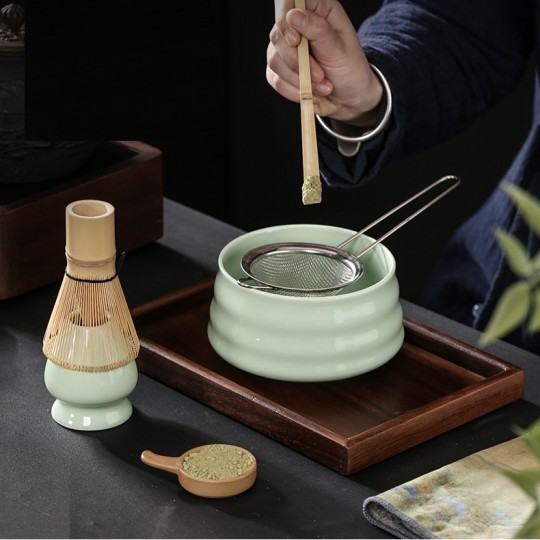Text
Why is Matcha So Expensive?
Matcha has gained immense popularity in recent years, and its demand is growing steadily. With its unique flavor and numerous health benefits, matcha has become a favorite drink among tea lovers. However, one thing that often surprises consumers is its high price. Matcha is much more expensive than regular tea, and the question that comes to mind is why? In this article, we'll explore the reasons behind matcha's high price and what makes it so unique.
Table of Contents
Introduction
What is matcha?
How is matcha made?
Growing and harvesting matcha
Production process
Grading and quality
Demand and supply
Distribution and transportation
Marketing and branding
Health benefits of matcha
Conclusion
FAQs
Is matcha worth the high price?
Can you find affordable matcha?
What is the best way to prepare matcha?
Can matcha expire?
Can matcha be used in cooking?

What is Matcha?
Matcha is a type of green tea that originated in China but is now mostly associated with Japanese tea ceremonies. Unlike regular tea, which is made by steeping tea leaves in hot water and then discarding them, matcha is made by grinding the whole tea leaves into a fine powder, which is then whisked with hot water to create a frothy beverage.
How is Matcha Made?
Matcha is made from shade-grown tea leaves. The shading process stimulates the production of chlorophyll and other compounds that give matcha its characteristic bright green color and unique flavor. After harvesting, the leaves are steamed to prevent oxidation and preserve their freshness. They are then dried and stone-ground into a fine powder.

credit to acacuss for the images and the support.
Growing and Harvesting Matcha
The process of growing and harvesting matcha is time-consuming and labor-intensive. The tea plants need to be carefully shaded and protected from sunlight to produce the desired flavor and color. The leaves are picked by hand, and only the youngest and tenderest leaves are selected for making matcha. This means that a large amount of labor is required to produce a relatively small amount of high-quality matcha.
Production Process
The production process for matcha involves several steps, including steaming, drying, and grinding the tea leaves. Each of these steps requires specialized equipment and skilled labor, which adds to the cost of producing matcha. The grinding process, in particular, is time-consuming and requires a lot of energy, as the tea leaves need to be ground slowly and carefully to prevent them from overheating and losing their flavor.

with the help of zenmatchatea.net
Grading and Quality
Matcha is graded based on several factors, including the color, texture, and aroma of the powder, as well as the flavor and freshness of the tea. Higher-quality matcha is made from the youngest and most tender leaves and is usually brighter green in color, with a smoother texture and a sweeter, more delicate flavor. Lower-quality matcha, on the other hand, is made from older leaves and may have a bitter taste and a less vibrant color.
Demand and Supply
Matcha is becoming increasingly popular worldwide, and the demand for high-quality matcha is growing. However, the supply of high-quality matcha is limited, as it requires a lot of labor and expertise to produce. This means that prices for high-quality matcha are likely to remain high due to the laws of supply and demand.
Distribution and Transportation
Matcha is typically produced in small quantities by artisanal tea producers, and it is often sold through specialty tea shops or online retailers.
This means that the distribution and transportation costs for matcha can be relatively high compared to other types of tea, as it needs to be carefully packaged and transported to ensure its quality and freshness.
Marketing and Branding
The marketing and branding of matcha can also contribute to its high price. Many companies that sell matcha focus on its health benefits and use marketing strategies to position it as a premium product. This can include using high-quality packaging, promoting its ceremonial use, and emphasizing its origins in Japan. All of these factors can add to the cost of matcha and make it more expensive for consumers.
Health Benefits of Matcha
Matcha is packed with antioxidants and has numerous health benefits, which is one reason for its growing popularity. Matcha contains caffeine, which can help to boost energy and mental clarity, and it also contains L-theanine, an amino acid that promotes relaxation and helps to reduce stress. Matcha is also high in polyphenols, which are compounds that have been shown to have anti-inflammatory and anticancer properties.
Conclusion
Matcha is a unique and flavorful type of tea that has become increasingly popular in recent years. Its high price can be attributed to several factors, including its labor-intensive production process, limited supply, and marketing and branding efforts. However, the health benefits and unique flavor of matcha make it a worthwhile investment for many tea lovers.

FAQs
Is matcha worth the high price?
Matcha is generally more expensive than other types of tea, but many people find that it is worth the investment due to its unique flavor and numerous health benefits.
Can you find affordable matcha?
Yes, it is possible to find affordable matcha, but it may not be of the same high quality as more expensive brands.
What is the best way to prepare matcha?
The best way to prepare matcha is to whisk the powder with hot water until it is frothy and smooth. Some people also like to add milk or sweeteners to their matcha.
Can matcha expire?
Yes, matcha can expire if it is not stored properly. It should be kept in a cool, dry place and consumed within a few months of opening.
Can matcha be used in cooking?
Yes, matcha can be used in cooking and baking to add flavor and color to a variety of dishes. It is often used in desserts, such as cakes, cookies, and ice cream.
0 notes